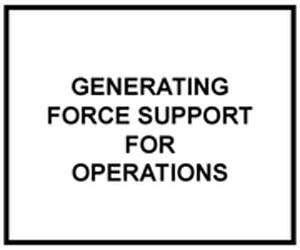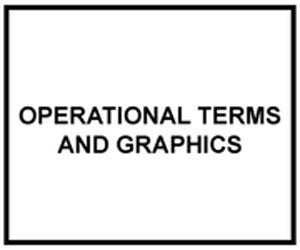
FM 5-415: Fire-Fighting Operations
Official US Army Field Manual in Acrobat PDF file format.
All levels of command are responsible for the Army's fire-protection plan. All commanders and supervisors must be responsible for the firesafety policies and plans in their organizations. They must be aware of fire safety in all endeavors of life.
Fire-fighting teams are not priority targets, but they may become targets of opportunity because of their location in relation to other mission-essential facilities. In low-level conflicts, fire-fighting teams become targets because of the response into the public domain. Fire-fighting units have no organic security assets. During fire-fighting operations, all crew members are engaged in the operations. Because of this, security must be provided for during response, retrieval, and fire-fighting operations.
Fire-fighting teams are manned by qualified military occupational specialty (MOS) 51Ms. The Basic Fire-Protection Apprentice Course (51M advanced individual training [AIT]) is currently conducted at Goodfellow Air Force Base (AFB), Texas (TX), and is 13 weeks long. Other advanced, specialized courses are taught there as well.
During garrison operations, engineer fire-fighting teams will be operationally assigned to an installation's fire department. This will allow the 51M firefighters to practice and train with an installation’s firefighters to maintain skills, knowledge, and performance according to their missionessential task list (METL).
Fire-fighting teams will support Force XXI by providing fire protection to deployed forces throughout the world in areas of operation (AOs) where the current infrastructure has collapsed or is in such deterioration that it cannot support the United States’ (US) interests. The number and types of firefighting teams needed to protect an AO will depend on its size and the type of facilities in that AO. Chapters 2 and 3 address the issue of fire-fighting teams. Consider the following guidelines when planning for fire-protection requirements:
• Aviation (unit support)¾one LB team per air-traffic services company.
• Airfield (point support)¾two LB teams per fixed airfield and heliport (UH-60, AH-64, CH-47).
• Supply (area support)¾one LB team for each of the following: 5 square miles of AO, corps support group (CSG), division support area (DSA), area support group (ASG), corps storage area (CSA), and theater storage area (TSA).
• Ammunition (point support)¾one LB team for each of the following: ammunition supply point (ASP), nuclear ammunition supply point (NASP), and chemical ammunition supply point (CASP).
• Petroleum, oils, and lubricants (POL) (point support)¾two LB teams per petroleum supply company and two per petroleum pipeline/ terminal operations company.
• Internment/dislocated civilian camp (point support)¾one LB team per internment/dislocated civilian camp.
• Contingency operations¾one LB team per 5 square miles of AO.
• Natural cover/brush¾two LB teams per ASG.
On the 24-hour concept and according to existing directives (the commander's priority list and mission requirements), engineer fire-fighting teams will provide fire-prevention/-protection, aircraft-crash/rescue, naturalcover- fire, and HAZMAT responses within a TO. The teams will:
• Conduct fire-prevention inspections and fire-fighting operations.
• Provide first-responder-level medical response and assistance to victims.
• Provide an initial response to HAZMAT incidents.
• Set up, operate, and maintain a 24-hour-a-day, fire-department communications network.
• Conduct POL fire-fighting operations.
• Conduct reconnaissance of the water-supply points.
• Provide water resupply to the fire-fighting teams.
• Maintain the emergency water-supply points.
• Provide additional manpower support to the fire-fighting teams.
• Provide command and control (C2) of non-fire-fighting assets used when supporting brush fire-fighting operations.
• Conduct crash/rescue operations, provide support for normal flight and maintenance operations, and support medical-evacuation (MEDEVAC) operations.
File download size: 13.5 MB



